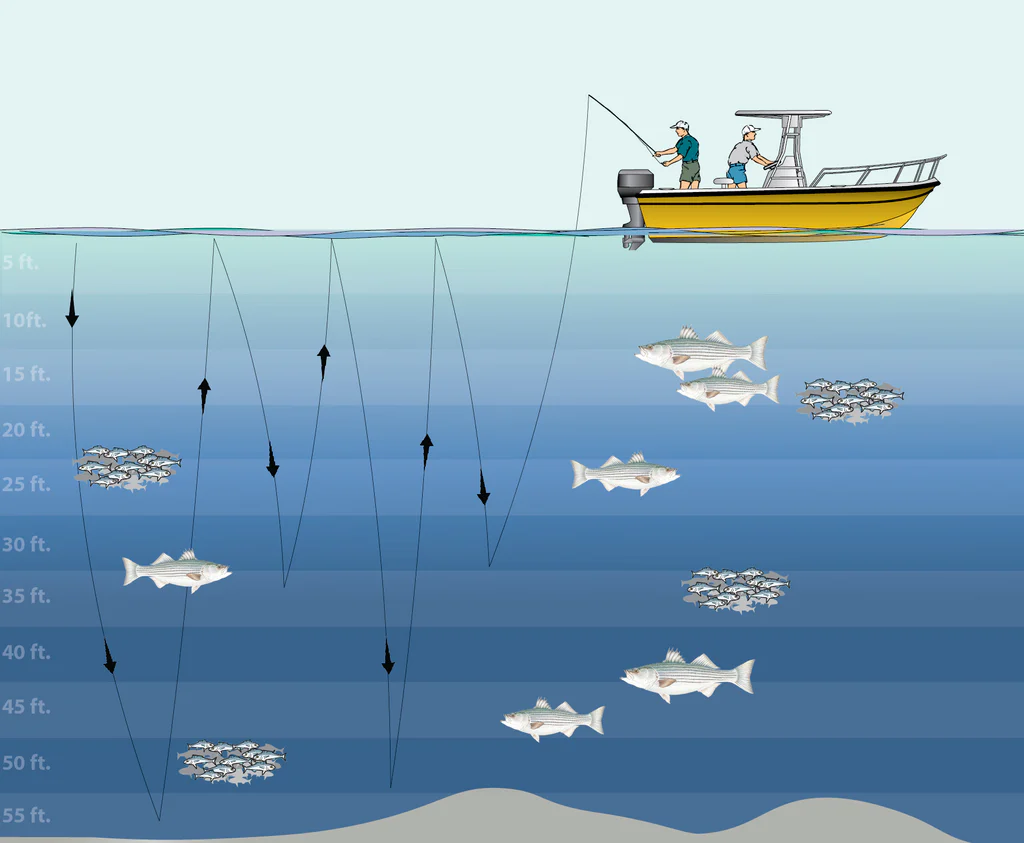What Is Slow Jigging? Here’s Our Guide…

Slow jigging is a technique that has grown in popularity in the UK over the last few years, and for good reason. It is an effective method for catching a wide variety of species, including cod, pollock, and bass. In this article, we will cover the essential information to get started slow jigging, including the best gear, techniques, and why it is an effective approach.
What is Slow Jigging?
Slow jigging is a fishing technique that involves using specialized jigs and a slow rhythmic action to jig and retrieve the lure. Unlike traditional jigging, which involves a fast and aggressive motion, slow jigging relies on a slower, more measured approach that allows the lure to stay in the strike zone for longer, increasing the chances of a bite.
Best Gear for Slow Jigging in the UK
When it comes to gear, there are a few essential components that you will need to get started with slow jigging in the UK.
Rod
The size and action of the rod will depend on the target species and the depth of water you will be fishing. However, in general, a slow jigging rod should be relatively lightweight and have a slow to medium action. Ideally, it should be designed specifically for slow jigging to provide the best sensitivity and responsiveness when jigging and retrieving the lure.
Reel
A high-quality reel is crucial for slow jigging. Look for a reel with a high line capacity, smooth drag, and a lightweight, compact design. A low gear ratio can also be an advantage, as it provides more power when cranking in a lure in deeper waters.
Braid
Braid is the line of choice for slow jigging, as it provides the best sensitivity, making it easier to detect bites. Look for a braid with a high breaking strain and a thin diameter to reduce drag and allow for longer casts.
Jigs
Slow jigs come in a range of shapes, sizes, and styles, including knife jigs, flutter jigs, and slow-pitch jigs. The best size and weight of the jig will depend on the target species and water conditions, but generally, jigs weighing between 80g and 150g are the most versatile.
Different Slow Jigging Techniques
1. Slow Pitch Jigging
Slow pitch jigging is a technique that involves a rhythmic motion, where the rod is raised and lowered in a slow, deliberate motion. This movement allows the lure to flutter and wiggle, imitating distressed baitfish, which can attract predatory fish.
To execute this technique, start by casting out your jig and allowing it to sink to the desired depth. Once it has reached the bottom, begin to gently lift the rod and then lower it back down. Repeat this process in a slow and deliberate motion.
2. Long Fall Jigging
Long fall jigging is a technique that involves allowing the lure to fall for an extended period before initiating the retrieve. This approach can be more effective when targeting bottom-dwelling species such as cod.
To execute this technique, cast out your jig and allow it to fall to the bottom. Once it has reached the desired depth, pause before retrieving the lure. This pause allows the jig to settle on the bottom, where it can draw in fish that are feeding on the bottom.
3. Micro Jigging
Micro jigging is a technique that uses smaller, lighter jigs to mimic the movement of prey such as shrimp and small baitfish. This approach is particularly effective when targeting smaller species such as pollack and sea bass.
To execute this technique, begin by selecting a smaller, lighter jig often weighing between 10g to 30g. Cast the lure out, and using a slow and steady retrieve, imitate the movement of small baitfish or shrimp.
Why is Slow Jigging Better Than Standard Drift Fishing?
One of the main advantages of slow jigging over traditional drift fishing techniques is its ability to keep the lure in the strike zone for longer periods. By using a slow, steady motion, the lure can stay in the water longer, increasing the chances of attracting fish. Additionally, the slower movement mimics the natural movement of baitfish, making it more attractive to predatory fish.
Another advantage of slow jigging is that it provides a more immersive fishing experience. Anglers must pay close attention to their rod, feeling for the slightest nibble or vibration, making it a more engaging and exciting process.
Conclusion
Slow jigging is a versatile and effective technique for catching a range of species in the UK. By selecting the right gear, mastering different techniques, and understanding why it is better than standard drift fishing, anglers can enjoy a productive and rewarding experience. Remember to start slow and experiment with different retrieves, depths, and jig sizes to find what works best for your fishing environment. With time and practice, you can become a skilled slow jigging angler and enjoy a new dimension to your fishing!
